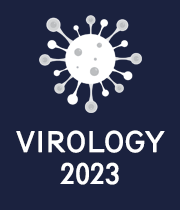Title : Modulation of MIR-663a expression by EBV-Encoded G Protein–coupled receptor (GPCR), BILF1, in burkitt lymphoma
Abstract:
The Epstein–Barr virus (EBV) is a γ-herpesvirus infecting over 90% of adults worldwide1. Similar to other herpesviruses, EBV encodes for a G protein–coupled receptor (GPCR), BILF1, affecting a multitude of cellular signaling pathways. BILF1 has been identified to promote immune evasion and tumorigenesis, ensuring a life-long persistence of EBV2. The structure and infection mechanism of EBV have been well studied, but the role of BILF1, is not fully understood. Given the important role of miRNAs in regulating nearly every aspect of biology, here, we have studied the impact of BILF1 on genes encoding miRNAs in B-cells and BL primary tumours3.
Material & Methods:
We transfected isolated primary human germinal centre (GC) B cells, the presumed progenitors of BL, with BILF1 plasmid and performed RNAseq assay. We also re-analyzed BL cases expressing BILF1 by Abate et al4.
Results:
We found that when expressed in B cells, BILF1 was able to regulate the expression of several genes encoding miRNAs. In particular, BILF1 was significantly associated with an upregulation of miR-663a host gene (HG). This gene encodes for miR663a which has been described as oncomiR in other diseases; however, its role in BL has never been studied. The dynamic changes in miR663aHG expression observed in B cells were validated in BL primary tumorus where this gene was similarly up-regulated in primary eBL expressing BILF1. Moreover, we observed that the expression levels of miR-663aHG significantly correlated with miR-663a, suggesting that miR-663a was co-expressed with its host gene miR663aHG under the regulation of the host gene promoter. We also found a positive correlation between BILF1 and miR663a in both B-cells and primary tumours. Thus, we defined the role of miR663a. After defining the validated and predicted target genes of miR-663a, a gene ontology analysis revealed that miR663a-targets were enriched for genes involved in B-cell differentiation, immune response to viruses and fatty acid metabolism.
Conclusions: This study defined a new role of BILF1, highlighting a positive correlation with miR663a which may play a substantial role in the aetiology of BL by regulating networks involved in B-cell proliferation and differentiation.
References.
- Yide Wong et al. Estimating the global burden of Epstein–Barr virus-related cancers. Journal of Cancer Research and Clinical Oncology, 148, 31–46 (2022)
- NaotakaTsutsum et al. Structural basis for the constitutive activity and immunomodulatory properties of the Epstein-Barr virus-encoded G protein-coupled receptor BILF1. Immunity, 54, 1405-1416 (2021)
- Steffen Jørgensen et al. The value of circulating microRNAs for early diagnosis of B-cell lymphoma: A case-control study on historical samples. Scientific Report, 10 9637 (2020)
- Francesco Abate et al. Distinct Viral and Mutational Spectrum of Endemic Burkitt Lymphoma PLoS Pathoghen, 11(10):e1005158 (2015)
What will audience learn from your presentation?
This topic contributes to better understand the pathological mechanisms induced by EBV in Burkitt lymphomas. It will also focus the attention to a new target (BILF1) that escaped the attention of the scientific community


